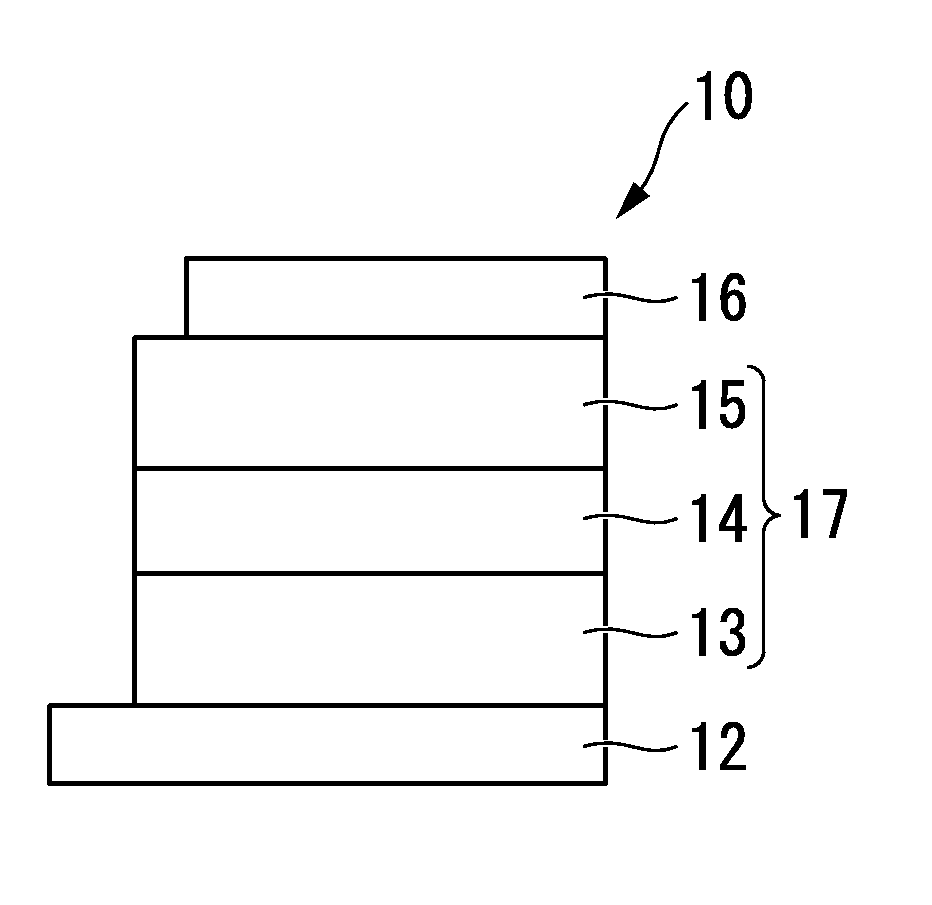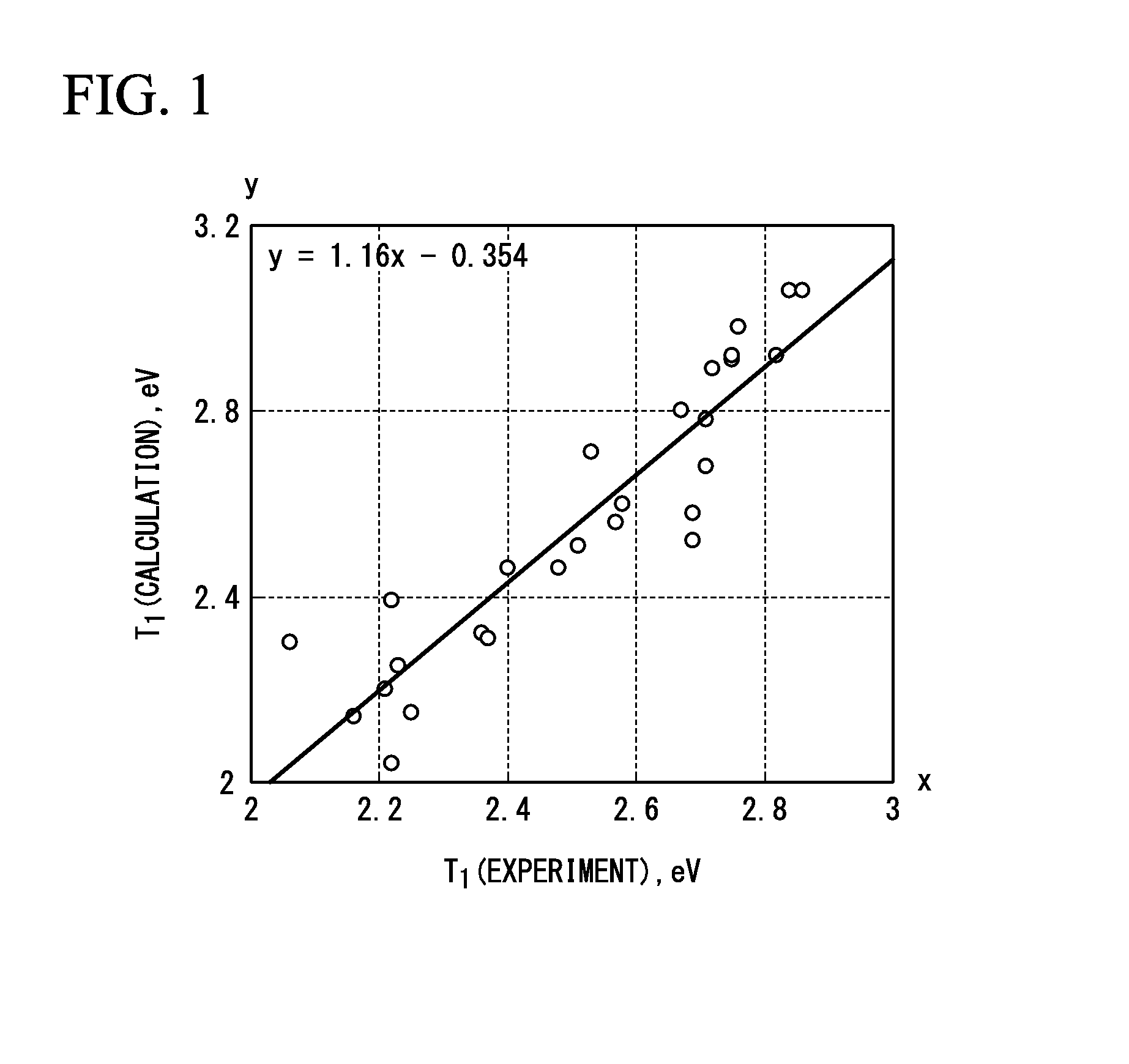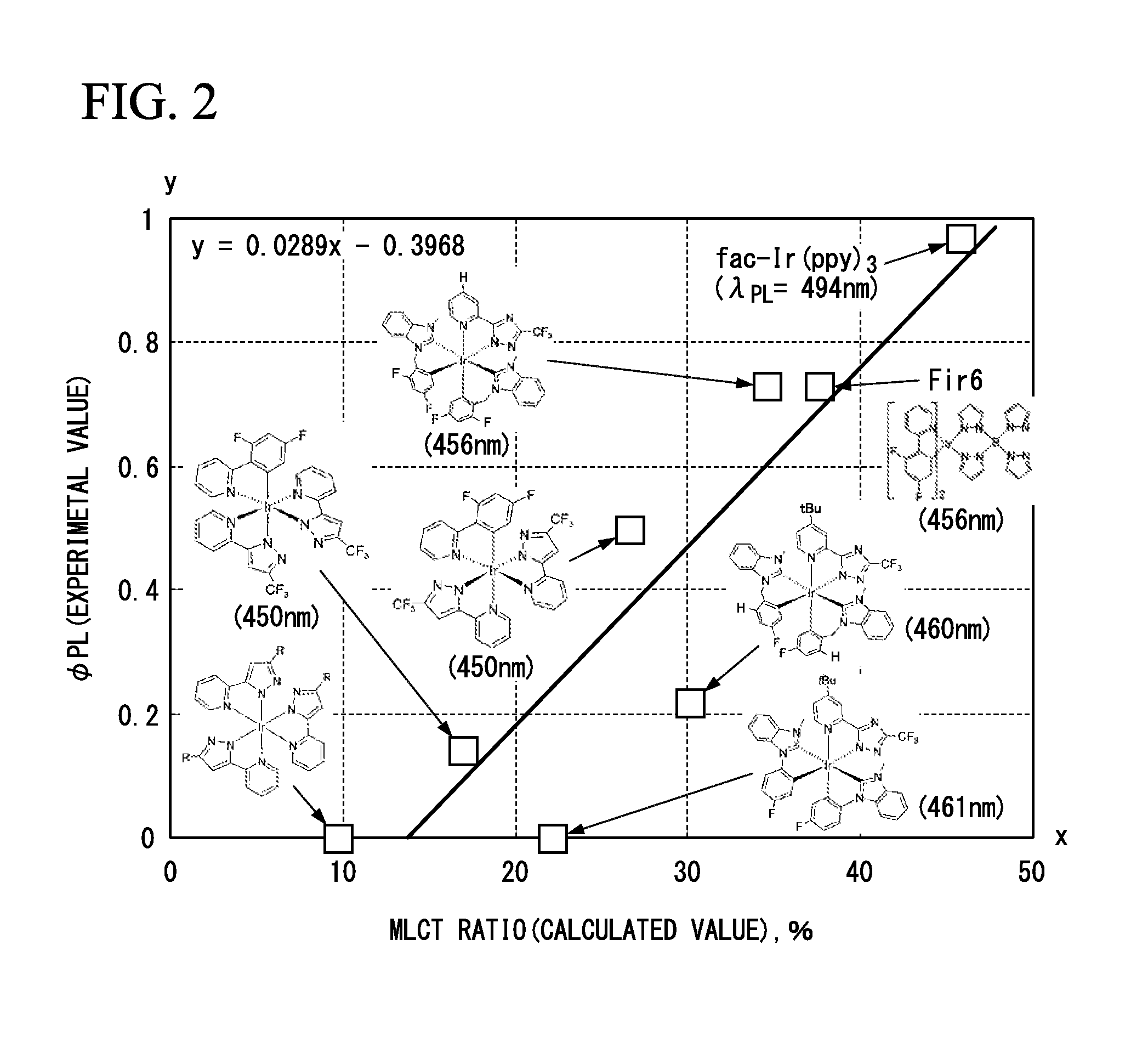Luminescent material, and organic light-emitting element, wavelength-converting light-emitting element, light-converting light-emitting element, organic laser diode light-emitting element, dye laser, display device, and illumination device using same
- Summary
- Abstract
- Description
- Claims
- Application Information
AI Technical Summary
Benefits of technology
Problems solved by technology
Method used
Image
Examples
first embodiment
[0068]As a result of thorough investigation, the present inventors found that a transition metal complex can emit blue phosphorescence with a high efficiency, the transition metal complex including at least a ligand in which an electron density of a p orbital of a highest occupied molecular orbital (HOMO) level is higher than 0.239 and lower than 0.711 when the electron density is calculated according to quantum chemical calculation (Gaussian09 / DFT / RB3LYP / 6-31G), the p orbital being the outermost shell of an element position coordinated to a metal. In an embodiment of the present invention, a quantum chemical calculation program Gaussian09 (Gaussian09 Revision-A.02-SMP) using density functional theory (DFT) is used for quantum chemical calculation; and the basis function 6-31G is applied to a ligand. In the case of a metal complex, the basis function LanL2DZ is applied to an Ir complex; and the basis function 6-31G* is applied to complexes other than an Ir complex. Information relat...
second embodiment
[0168]FIG. 7 is a cross-sectional view schematically illustrating a second embodiment of the organic light-emitting element according to the embodiment. An organic light-emitting element 20 illustrated in FIG. 7 includes a substrate 1; TFT (thin film transistor) circuits 2 that are provided on the substrate 1; and an organic light-emitting element 10 (hereinafter, also referred to as “organic EL element 10”). The organic light-emitting element 10 includes a pair of electrodes 12 and 16 that are formed on the substrate 1; and an organic EL layer (organic layer) 17 that is interposed between the pair of electrodes 12 and 16. The organic light-emitting element 20 is a top emission type organic light-emitting element that is driven with an active driving method. In FIG. 7, the same components as those of the organic light-emitting element 10 illustrated in FIG. 6 are represented by the same reference numerals, and the description thereof will not be repeated.
[0169]The organic light-emit...
synthesis example 1
Synthesis of Compound 1
[0278]Compound 1 was synthesized according to the following route.
Synthesis of Compound B
[0279]Compound A (0.1 mol) was added dropwise to an aqueous methylamine solution (0.5 mol). After stirring for several minutes, a solid material precipitated. Water is added to the reaction solution and the solid material was separated by filtration in a liquid separating treatment, followed by drying. As a result, Compound B was obtained. Yield: 82%
Synthesis of Compound C
[0280]A hexane solution of n-BuLi (10.2 mmol) was slowly added to a solution in which Compound B (10.2 mmol) was dissolved in THF (tetrahydrofuran) at room temperature. After 30 minutes, trimethylsilyl chloride (10.2 mmol) was added thereto. Next, the solvent was removed under reduced pressure, followed by extraction with ether. As a result, Compound C was obtained. Yield: 93%
Synthesis of Compound D
[0281]Sn(CH3)4 (5 mol) was added to BBr3 (10 mol) at −50° C. under stirring, followed by stirring for 1 hour...
PUM
 Login to View More
Login to View More Abstract
Description
Claims
Application Information
 Login to View More
Login to View More - R&D
- Intellectual Property
- Life Sciences
- Materials
- Tech Scout
- Unparalleled Data Quality
- Higher Quality Content
- 60% Fewer Hallucinations
Browse by: Latest US Patents, China's latest patents, Technical Efficacy Thesaurus, Application Domain, Technology Topic, Popular Technical Reports.
© 2025 PatSnap. All rights reserved.Legal|Privacy policy|Modern Slavery Act Transparency Statement|Sitemap|About US| Contact US: help@patsnap.com



